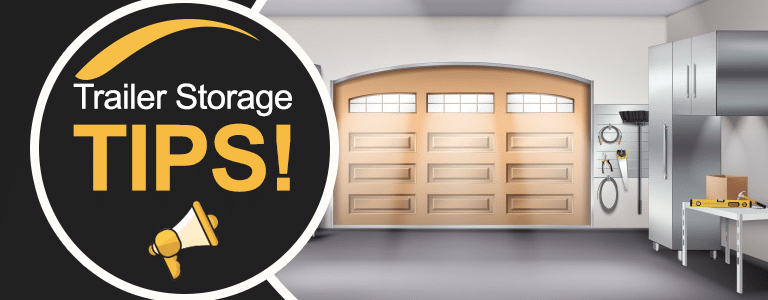
Storage Tips for Your Utility or Flatdeck Trailer
During the spring and summer, you can get a lot of use out of aluminum flat deck trailers or utility trailers. However, once the weather starts turning colder and the ground freezes, you may find that you have to put your trailer away for the winter. You may be tempted to just find a good parking spot and detach the trailer, but this could end up damaging it. Follow these steps to help make sure that your trailer is ready to go when you need it again in the warmer months.
1. Choose Appropriate Space
Part of the advantage of buying custom trailers from Millroad is that you can choose the dimensions that work best for you rather than having to accept a standard size. This also means that when it comes time to store it, you have to find a space to accommodate it.
An MWD18-5 flat deck trailer measuring 23 feet or more in length will not fit in a space intended for an MS46HT utility trailer that is only 6 to 8 feet in length. Similarly, while you can store an MS412 utility trailer that is only 12 to 16 feet in length in a facility meant to house a 24-foot MWD20-7 flat deck, it is a waste of space unless you also have another 10-foot trailer that you want to store in the same structure.
2. Cover the Trailer
While storing a trailer inside is most effective at protecting against weather, you may not have the necessary interior storage space available. If you have to park your trailer outside, applying a protective cover can prevent weathering and fading by shielding it from the elements.
While the cover doesn’t have to be custom-fitted to the trailer, it should be large enough to envelop it entirely. If the trailer has ramps, such as the MF1480 flat deck trailer or the MS48 utility trailer, you must take this into consideration when choosing a cover of adequate size.
3. Relieve the Pressure
Even with the trailer unloaded, its weight can put pressure on the tires and suspension system when it sits unused for long periods of time. You can relieve the pressure by jacking up the trailer while it is in storage. Do this by stacking two lines of concrete blocks or preparing two beams of wood high enough off the ground to allow the trailer to rest on them without the tires coming in contact.
4. Protect the Tires
The tires of your trailer can dry out and start forming cracks when left unused for some time. You can prevent drying and cracking by spraying the rubber of the tires, especially around the air valve, with a protective coating and by inflating them fully before storing them. If you have a trailer with spare tires, such as the MS410 utility trailer, the spares should receive the same treatment.
Extremes of temperature and precipitation can also damage your tires. If you are storing your trailer outside, you may consider removing the tires altogether and storing them separately indoors.
5. Grease the Moving Parts
When the trailer is not in use, the axle bearings no longer have the benefit of self-lubrication. You can compensate for this by re-lubricating the bearings yourself every couple of weeks. You should also grease any other moving parts before storing your trailer, including the hinges, suspension and hitch.
6. Remove the Batteries
When left idle for prolonged periods, the battery for the brakes may develop excess deposits, potentially causing shorts, or die down altogether. When preparing your trailer for storage, remove the battery completely and store it safely and separately. Once the storage season is over, it can be replaced.Taking steps to prepare your trailer before storage helps to prolong its useful life. When you are in need of a new or replacement trailer, Millroad Manufacturing has both standard and custom models available.